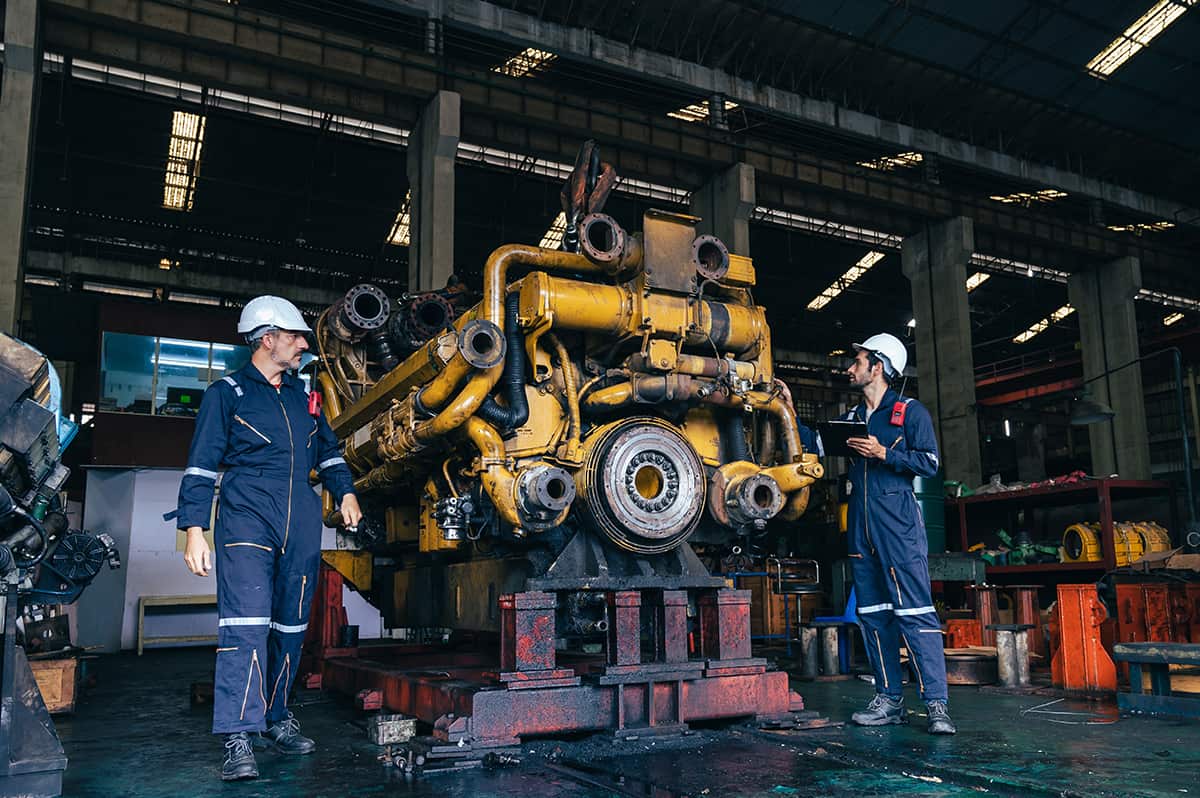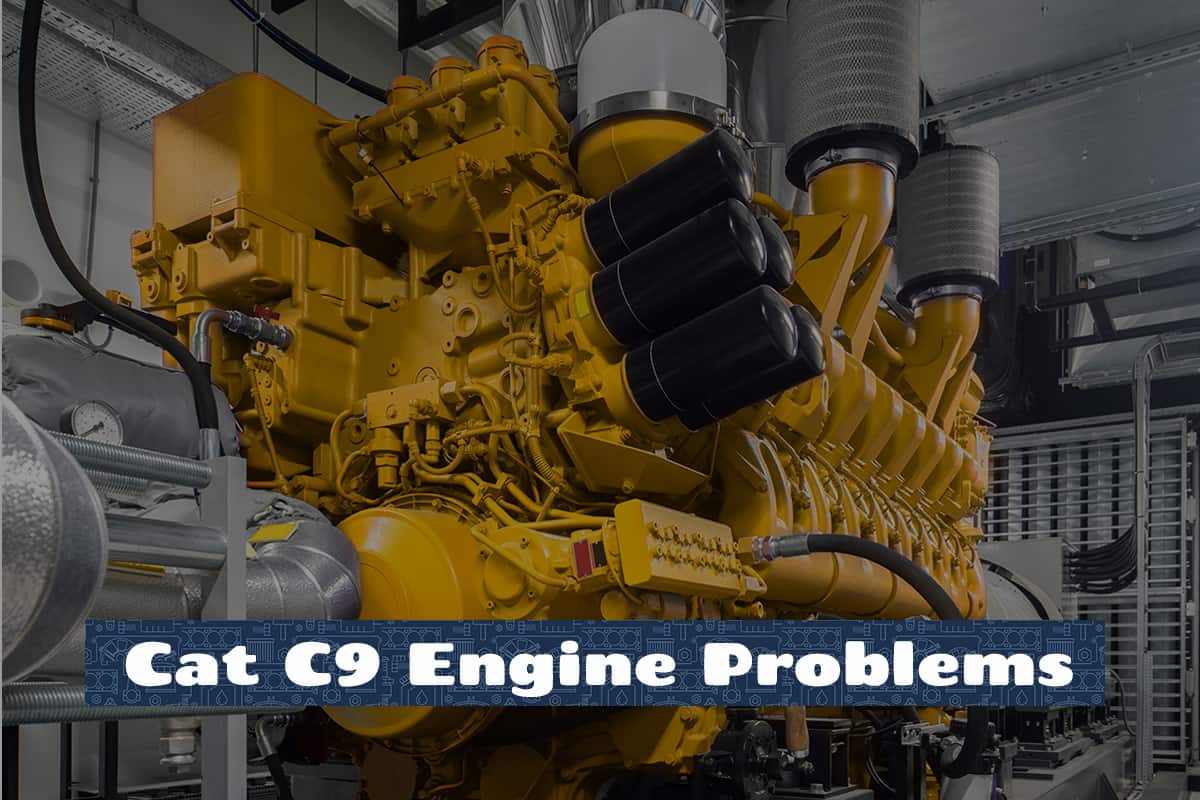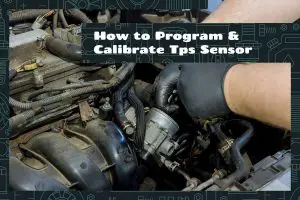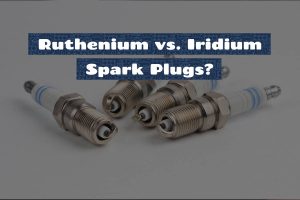The Cat C9 engine is known for its robust design and widespread use in various industries. From marine applications to heavy machinery, this diesel engine has garnered appreciation for its reliability and performance. However, the Cat C9 has its share of challenges that users may eventually encounter.
Common problems associated with the Cat C9 engine include oil leakage, cooling system failures, malfunctioning sensors, power loss, and decreased fuel efficiency.
Today, we will take a deeper look at these Cat C9 engine problems and explain what your repair or replacement options are.
What Is the Cat C9 Engine?

The Cat C9 engine is a formidable product of Caterpillar, a renowned brand in the engine-manufacturing industry. Recognized for its sturdiness and versatility, this diesel engine finds its applications in various sectors, ranging from marine to heavy machinery. Characterized by its inline 6, 4-stroke-cycle diesel configuration, the Cat C9 is designed to offer a blend of power, efficiency, and durability.
With its power ranging from 275 to 375 BHP, the engine is tailored to meet diverse power requirements across its applications. The engine’s turbocharged aftercooled (TA) aspiration ensures it delivers consistent performance, while the direct injection combustion system provides improved fuel efficiency. Furthermore, the Cat C9 operates at a rated speed of 1800-2200 RPM, making it a reliable choice for various machinery and marine applications.
Engine Specifications Chart
| Specifications | Details |
| Minimum Power | 275 BHP |
| Maximum Power | 375 BHP |
| Rated Speed | 1800-2200 rpm |
| Emissions | China Nonroad III, U.S. EPA Tier 3 Equivalent, EU Stage IIIA Equivalent |
| General | |
| Engine Configuration | Inline 6, 4-Stroke-Cycle Diesel |
| Bore | 112 mm (4.41 in) |
| Stroke | 149 mm (5.87 in) |
| Aspiration | Turbocharged Aftercooled (TA) |
| Displacement | 8.8 L (537.01 in³) |
| Compression Ratio | 16.1:1 |
| Combustion System | Direct Injection |
| Rotation from Flywheel End | Counterclockwise |
| Lube System – Refill | 32 L (33.8 qt) |
| Height | 1023 mm (40.3 in) |
| Length | 1091 mm (43 in) |
| Weight – Net Dry | 864 kg (1905 lb) |
| Width | 827 mm (32.6 in) |
Source: Cat.com
Common Cat C9 Engine Problems (and Possible Solutions)
As well-known the Cat C9 is for its durability and performance, this is not without its challenges. Over time, users might encounter various problems, some due to wear and tear, and others because of external factors or maintenance lapses.
1. Oil Leakage
One of the frequently reported issues with the Cat C9 engine is oil leakage. Oil leaks can occur for several reasons:
- Aging Seals and Gaskets: Over time, the seals and gaskets that prevent oil from escaping can deteriorate or become brittle. This degradation can lead to small gaps through which the oil can seep out.
- Overfilled Oil Reservoir: Filling the oil reservoir beyond its capacity can create excessive pressure, causing oil to find its way out through weak spots.
- Worn-Out O-Rings: These are circular seals in the engine, and when they wear out, they might not seal as efficiently, leading to potential oil leaks.
Potential Fixes:
- Replace Seals and Gaskets: Regularly inspect seals and gaskets for wear. Replacing compromised ones can prevent potential leaks.
- Maintain Correct Oil Levels: Always ensure the oil reservoir is filled to the recommended level. Using a dipstick can help in gauging the oil level.
- Check and Replace O-Rings: Periodically inspect the O-rings, replacing any that show signs of wear to maintain a tight seal.
2. Cooling System Failures
An efficient cooling system is essential to keep the engine at optimal operating temperatures. Issues with the cooling system can lead to:
- Overheating: Blocked radiators, malfunctioning water pumps, or low coolant levels can prevent the engine from dissipating heat effectively.
- Radiator Issues: Leaks, clogs, or damages to the radiator can reduce its efficiency in cooling the engine.
- Thermostat Malfunctions: A faulty thermostat might not regulate the coolant flow properly, leading to temperature fluctuations.
Potential Fixes:
- Regular Radiator Maintenance: Clean the radiator fins and check for leaks. Ensure that the coolant is replenished and free from contaminants.
- Water Pump Inspection: A faulty water pump can hinder coolant circulation. Regular inspections can identify and address potential issues early.
- Thermostat Replacement: If the engine shows signs of temperature inconsistencies, consider replacing the thermostat.
3. Fuel Pump Breakdown
The fuel pump’s role is to supply the engine with a steady stream of fuel. Problems with the fuel pump can affect the engine’s performance:
- Inconsistent Fuel Supply: A malfunctioning pump can lead to an uneven supply of fuel, causing the engine to stutter or stall.
- Fuel Contamination: Debris or water in the fuel can wear down the pump over time, leading to inefficiencies.
- Worn Out Components: The internal components of the pump, like the rotor, can wear out, diminishing the pump’s efficiency.
Potential Fixes:
- Clean Fuel Usage: Always use clean fuel. Consider adding a pre-filter to eliminate potential contaminants before they reach the pump.
- Fuel Pump Inspection: Regularly inspect the fuel pump for wear and replace it when necessary to ensure a consistent fuel supply.
- Regular Component Checks: Periodically inspect the internal components, such as the rotor, for signs of wear and replace if needed.
4. Sensor Malfunctions
Modern engines, including the Cat C9, rely on various sensors, such as temperature sensors, to monitor and regulate performance. Issues with these sensors can lead to:
- Incorrect Readings: Faulty sensors might send incorrect data to the engine control module, causing it to make inappropriate adjustments.
- Performance Drops: Sensors play a key role in optimizing engine performance. Malfunctions can lead to reduced power output or decreased fuel efficiency.
- Failure to Start: In some cases, if certain sensors fail, the engine might not start at all, as the control module doesn’t receive the necessary inputs.
Potential Fixes:
- Routine Sensor Checks: Regularly inspect sensors for damage or wear. Clean them periodically to ensure they provide accurate readings.
- Replace Faulty Sensors: If a sensor provides inconsistent readings or fails, replace it promptly to avoid larger engine problems.
- Regular Diagnostics: Consider running diagnostic tests periodically. This can identify malfunctioning sensors before they pose significant challenges.
5. Decreased Fuel Efficiency
A noticeable drop in fuel efficiency can indicate underlying problems. Some causes include:
- Air Filter Clogs: A clogged air filter restricts airflow, making the engine work harder and consume more fuel.
- Fuel Injector Issues: Dirty or malfunctioning fuel injectors can disrupt the optimal fuel-to-air mixture, leading to inefficiency.
- Worn Spark Plugs: Over time, spark plugs can degrade, affecting the combustion process and, in turn, fuel efficiency.
Potential Fixes:
- Air Filter Maintenance: Clean or replace the air filter at recommended intervals to ensure unrestricted airflow.
- Fuel Injector Cleaning: Periodically clean the fuel injectors. This ensures a consistent fuel-to-air mixture and improves combustion efficiency.
- Spark Plug Replacement: Check spark plugs for signs of wear. Replace them at regular intervals to maintain optimal combustion.
6. Power Loss
Experiencing a loss of power can be concerning, especially since your day-to-day relies on the engine turning over. Potential reasons encompass:
- Exhaust System Blockages: Blockages in the exhaust system, like a clogged catalytic converter, can hinder the engine’s ability to expel exhaust gases, causing power loss.
- Transmission Issues: Problems with the transmission can prevent the engine’s power from being effectively transferred to the wheels.
- Air Intake Restrictions: Any obstruction in the air intake system can reduce the amount of air available for combustion, leading to diminished power.
Potential Fixes:
- Clear Exhaust System Blockages: Regularly inspect the exhaust system. Address any blockages, such as a clogged catalytic converter, to ensure efficient exhaust expulsion.
- Transmission Maintenance: Regular transmission checks can identify issues that hinder power transfer to the wheels. Address these early to maintain performance.
- Ensure Unrestricted Air Intake: Check the air intake system for obstructions. Cleaning or replacing filters can restore airflow and improve combustion efficiency.
You can learn more about another cat engine in our guide about ‘Cat c7 engine problems‘







